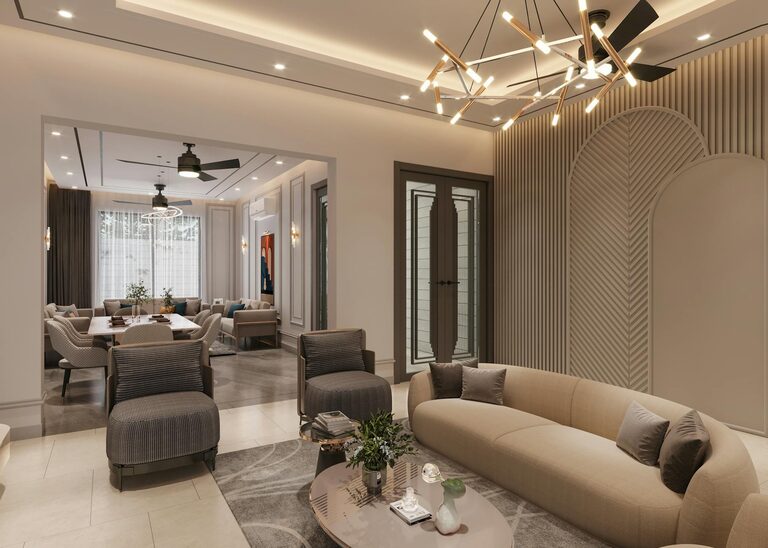Creating the right lighting in your home is essential for comfort, mood, and functionality. Whether you’re reading, working, cooking, or relaxing, good lighting supports your activities while enhancing the style of your space. However, choosing comfortable home lighting can sometimes feel overwhelming with so many options available. This guide offers clear, practical tips to help you select lighting that feels natural, reduces eye strain, and complements your home’s design.
Why Comfortable Lighting Matters
Comfortable lighting affects more than just how a room looks; it impacts your well-being. Proper lighting can reduce headaches, prevent eye fatigue, and improve your mood. Overly harsh or dim lighting can cause discomfort and even disrupt your sleep cycle. By paying attention to lighting quality, color, and placement, you can create rooms that are both inviting and practical.
Types of Lighting to Consider
Understanding the three primary types of lighting will help you layer your home’s illumination effectively:
– Ambient lighting: The general light that fills the room (e.g., ceiling fixtures, recessed lights).
– Task lighting: Focused light for activities like reading, cooking, or working (e.g., desk lamps, under-cabinet lights).
– Accent lighting: Decorative lighting that highlights features or adds atmosphere (e.g., wall sconces, LED strips).
A healthy balance of these types creates comfortable and versatile spaces.
Tips for Choosing Comfortable Home Lighting
1. Opt for Warm Light Temperature
Light temperature is measured in Kelvins (K). For comfortable home environments, aim for warm white light between 2700K and 3000K. This warm hue mimics natural light during sunset, creating a cozy and relaxing atmosphere. Avoid cool white or daylight bulbs above 4000K in living spaces, as they can feel harsh and clinical.
2. Use Dimmable Fixtures
Installing dimmable lighting options allows you to adjust the brightness according to the time of day and activity. Softer dimmed light can help you unwind in the evening, while brighter settings improve visibility for tasks. Choose compatible bulbs and switches for smooth dimming without flicker.
3. Consider Light Intensity and Brightness
Lumens measure the brightness of a bulb; higher lumens mean more light. The recommended brightness varies by room:
– Living rooms and bedrooms: 1,500–3,000 lumens total
– Kitchens and workspaces: 4,000–8,000 lumens total
– Bathrooms: 4,000–8,000 lumens total
Layer light sources to achieve flexibility, using multiple fixtures instead of one extremely bright light.
4. Choose the Right Bulb Type
LED bulbs are highly recommended due to their energy efficiency, long life, and variety of color temperatures. They produce less heat, making them safer and more comfortable. If you prefer traditional options, CFLs are also efficient but contain small amounts of mercury and require careful disposal.
5. Use Lampshades and Diffusers
Lampshades and diffusers soften and scatter light, reducing glare and harsh shadows. They help create a more pleasant, evenly lit environment. When shopping, look for shades made of fabric or frosted glass for maximum comfort.
6. Position Lighting Strategically
Avoid placing lights directly behind screens or in spots that cause glare. For reading or computer work, position task lights to the side and behind you to prevent shadows or reflections. In general, aim for multiple light sources rather than a single central fixture to eliminate dark corners.
7. Incorporate Natural Light
Whenever possible, maximize natural daylight. Use sheer curtains to diffuse sunlight gently, and arrange furniture to benefit from windows. Natural light is the most comfortable and beneficial form of lighting, supporting your body’s natural rhythms.
8. Match Lighting Style to Room Function and Décor
Consider the room’s purpose and style when selecting fixtures. For example, sleek modern pendants complement kitchens, while soft table lamps suit bedrooms. Choose sizes and shapes that fit your space proportionally for an aesthetically pleasing look.
9. Avoid Flickering and Buzzing Lights
Flicker or buzzing can cause discomfort and headaches. Use high-quality bulbs and fixtures and verify compatibility with dimmers and controls. If you notice flickering, try replacing bulbs or troubleshooting the wiring.
10. Experiment with Color and Smart Controls
Smart lighting systems allow you to change colors and set schedules to match your mood or activity. Adjustable white bulbs can shift from warm to cool tones as needed. These tools enhance comfort and add fun versatility to your home lighting.
Final Thoughts
Choosing comfortable lighting for your home is about balance—between brightness and softness, function and style, artificial and natural sources. Taking time to understand your space’s needs and experimenting with different solutions will lead you to lighting that supports wellbeing and enhances your living environment. Start small by upgrading a single fixture or adding a lamp, then gradually tailor your lighting to make every corner of your home a cozy, inviting place.
Enjoy the process of creating a well-lit home that truly feels comfortable and welcoming!

